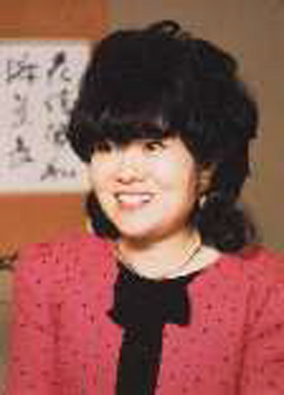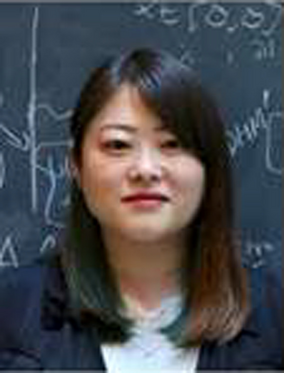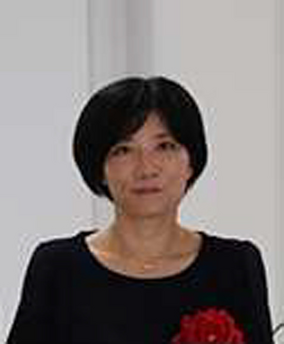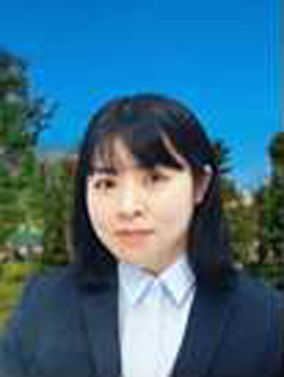The Physical Society of Japan: The 6th (2025) Fumiko Yonezawa Memorial Prize by JPS
The late Fumiko Yonezawa, emeritus professor of Keio University, made major contributions to physics, such as the development of the coherent potential approximation, and the theory of the metal–insulator transition in liquid selenium. Prof. Yonezawa served as the first female president of the Physical Society of Japan (JPS), and as the president of the Society for Women Scientists for a Bright Future, she also promoted women scientists.
JPS has established the “Fumiko Yonezawa Memorial Prize” to celebrate the achievements of Prof. Yonezawa and to honor and encourage the activities of the women who are members of JPS.

Fumiko Yonezawa
1938–2019
Several prize winners are selected once a year, with a maximum of about five recipients. The prize ceremony is held during the annual meeting of JPS. The prize recipients give commemorative lectures at JPS meetings within a period of 1 year after receiving the prize. Winners receive items such as certificates and honorary shields, as well as additional prizes, namely: (1) paid attendance fees for JPS meetings for the next 3 years and (2) an exemption, of up to 200,000 JPY (yen), from publication fees and open-access fees for the Journal of the Physical Society of Japan and from the article processing charges for the journal, Progress of Theoretical and Experimental Physics, which is valid for submissions up to 3 years after the prize is received.
The citations of the winners of the 6th (2025) Fumiko Yonezawa Memorial Prize are listed below.

Miho Katsuragawa
Assistant Professor, Graduate School of Science, Kyoto University
Interdisciplinary research based on hard X-ray space observation technologies and their applications to accelerator experiments
Dr. Miho Katsuragawa is pioneering innovative approaches in diverse fields such as nondestructive elemental analysis and cancer radiation therapy, by utilizing a hard-X-ray detector originally designed for an X-ray astronomy satellite. The detector is a CdTe semiconductor imaging sensor, and it can measure the energies and incident positions of X-rays with high precision.
In nondestructive elemental analysis using negative muons, elements are identified by injecting muons into a material and observing the characteristic X-rays emitted from muons captured in atoms. However, the positional resolution of elements was previously limited by the size of the muon beam. Dr. Katsuragawa applied cutting-edge detector technology developed for X-ray astronomy. By attaching a specially designed collimator, she successfully captured two-dimensional images of selected elements with a remarkable 1-mm positional resolution even with a large and intense muon beam.
By adjusting the muon momentum, this technology can also choose the depth of elements, enabling three-dimensional positional analysis. This groundbreaking advancement has already led to industrial applications, such as studying the distribution of Li in Li-ion batteries.
In the field of cancer radiation therapy, Dr. Katsuragawa employed the new X-ray detector to demonstrate how radiopharmaceuticals concentrate within a tumor in a mouse by imaging the X-rays emitted by the radiopharmaceuticals. This achievement has received significant attention from medical and pharmaceutical researchers, leading to the initiation of several collaborative research projects.
With her exceptional detector development skills and expertise in X-ray detectors, Dr. Katsuragawa has been visualizing what could not be seen before and forging new pathways in collaboration with researchers from various disciplines.
Given her outstanding contributions, Dr. Miho Katsuragawa is poised to create entirely new fields and research directions in the future. Dr. Miho Katsuragawa thus deserves to receive the Fumiko Yonezawa Memorial Prize of the Physical Society of Japan.

Natsuki Tomida
Assistant Professor, Division of Physics and Astronomy, Graduate School of Science, Kyoto University
Study of the origin of hadron masses using photon beams and development of large-area, high-time-resolution detectors
Dr. Natsuki Tomida has achieved remarkable accomplishments in the search for η′ bound nuclei. The experiment aimed to elucidate the mechanism of mass generation in hadrons by investigating changes in the mass of η′ mesons inside nuclei. At the SPRING-8 LEPS2 facility, η′ bound nuclei were searched via the γ + 12C reaction. Dr. Tomida introduced a novel method of proton-η′ coincidence following the decay of η′ bound nuclei. This approach significantly reduced background and paved the way for future high-statistics experiments.
A key experimental device in this experiment was the resistive plate chamber (RPC). Tomida’s second major achievement was the development of high-performance RPCs, where she successfully implemented ultrahigh timing resolution while maintaining large acceptance. In experiments using intense hadron and photon beams, it has been a challenge to develop detectors that cover large solid angles while maintaining high time resolution. Although RPCs were a strong candidate, it was difficult to achieve high-performance values. Tomida solved various issues and successfully developed a detector with the world’s highest timing resolution for a large-area RPC. The successful operation of this RPC in the η′ bound nuclei experiment has significantly expanded its potential, leading to its adoption at J-PARC, LEPS2, and major international research institutes abroad. Dr. Tomida has now been recognized as a leader in the international collaboration to develop the next generation of RPC detectors.
For her remarkable contributions to expanding the possibilities of observing η′ bound nuclei, her development of high-performance RPC detectors that have become standard in particle and nuclear physics experiments, and her continued leadership in advancing this field at an international level, Dr. Natsuki Tomida deserves to receive the Fumiko Yonezawa Memorial Prize of the Physical Society of Japan.

Sachiko Nakamura
Associate Professor, Department of Physics, Faculty of Science, Kyushu University
Novel superconducting dynamics studied by nonlinear terahertz spectroscopy
Dr. Sachiko Nakamura is breaking new ground for the Higgs modes observation in superconductors by combining low-temperature experimental techniques with terahertz spectroscopy. She has shown that under supercurrent injection, it is possible to observe the Higgs modes corresponding to collective excitations associated with symmetry breaking by linear coupling with terahertz waves. Previously, the observation of the Higgs mode in superconductors was performed via the nonlinear optical response to terahertz waves, which imposed significant experimental constraints and limited the range of applicable superconductors. This method is expected to expand to a wider range of superconductors.
Utilizing this method, Dr. Nakamura found that the second harmonic of terahertz waves is generated in the dirty limit superconductor NbN, where the correlation distance of Cooper pairs is sufficiently longer than the mean free path. Dr. Nakamura revealed that its origin is due to the motion of magnetic flux quanta and proposed an original method for determining its mass. By extending the method to FeSe0.5Te0.5 superconductors, she showed that the flux core mass is comparable to the electron mass even in clean superconductors, contrary to previous theoretical predictions. This can be appreciated as an important contribution to the understanding of ultrafast dynamics in superconductors and, in particular, the mechanism of superconducting breakdown.
Dr. Nakamura has contributed to the development of condensed matter physics by utilizing her expertise in both low-temperature physics and optical material properties, making her a worthy recipient of the Fumiko Yonezawa Memorial Prize of the Physical Society of Japan.
Author information
Authors and Affiliations
Consortia
Contributions
All authors read and approved the final manuscript.
Ethics declarations
Competing interests
All authors declared that they have no competing interests.
Additional information
Publisher’s Note
A list of authors and their affiliations appears at the end of the paper.

